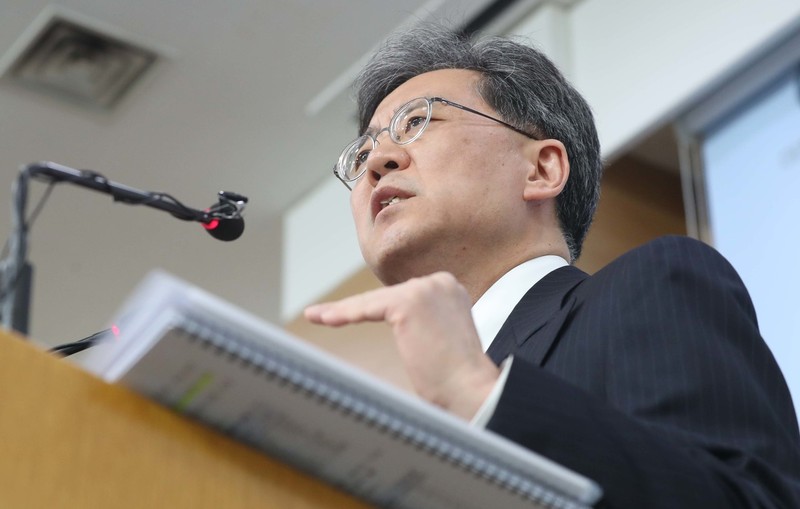 |
|
Trade Minister Kim Hyun-chong at a briefing for the results of the negotiations for South Korea-US FTA revision negotiations and steel tariffs in Seoul on Mar. 26. (Baek So-ah, staff photographer)
|
Trade Ministry holds export assessment meeting for major South Korean industries
On Sept. 12, the South Korean Ministry of Trade, Industry and Energy organized an export assessment meeting for major industries at the Korea Trade Insurance Corporation, in downtown Seoul. This meeting was presided over by Trade Minister Kim Hyun-chong and attended by representatives from groups and associations in a range of industries, such as semiconductors, automobiles, shipbuilding, steel and petrochemicals. “The basis of the trade dispute between the US and China is a clash of empires over technological, industrial and financial hegemony. One of these empires is a thalassocracy, or sea-based power, seeking to expand its influence via the ocean, and the other is a tellurocracy, or land-based power, seeking to expand its territory on the land,” Kim said during the event. Kim voiced his concern that this dispute “is very likely to become a protracted structural conflict.” South Korea’s trade office announced it had decided to focus on the strategy of diversifying export markets and products and to increase support for trade finance. Furthermore, the office said it had selected India, Indonesia, Russia, and Brazil – which are near the top ten worldwide in terms of GDP and population – as four major emerging markets to be strategically targeted for exports and that it would be concentrating resources on marketing exports to those countries. Through these measures, the office said, it plans to engineer at least a 70 percent increase in total exports to these four countries over current levels by 2022. “Through August of this year, accumulated exports have reached their highest level ever, and it’s not inconceivable that we’ll reach US$600 billion of annual exports this year. However, anxiety in emerging markets’ real economies resulting from the rapid devaluation of their currencies and the prolongation of the trade conflict between the US and China is posing a threat to South Korean exports. It’s urgent that we adopt a special export strategy to surmount the structural crisis both at home and abroad,” Kim said. Under the goal of “using exports to drive innovative growth,” the government has decided to implement a differential support system for trade insurance for each stage of company growth linking industry, trade and finance so that export revitalization can be closely connected with innovative growth. The government will also be providing groundbreaking assistance to startups, which will include an immediate export credit guarantee even if the companies haven’t gotten any results in their exports yet. The Ministry is planning to develop a trade strategy that will encompass new challenges, including the Fourth Industrial Revolution and job creation, by the end of the year. During the day’s meeting, associations from major industries predicted that there would be a major decrease in exports in September despite the recent signs of recovery in the global economy and trade. This is due not only to the fact that there are four fewer working days this month than previous years because of the Chuseok holiday, but also because of the base effect resulting from the monthly record set by exports last September (US$55.12 billion, US$3.12 billion in ships). The associations told the government that they will need special assistance for September exports. By Cho Kye-wan, staff reporter Please direct comments or questions to [english@hani.co.kr]






